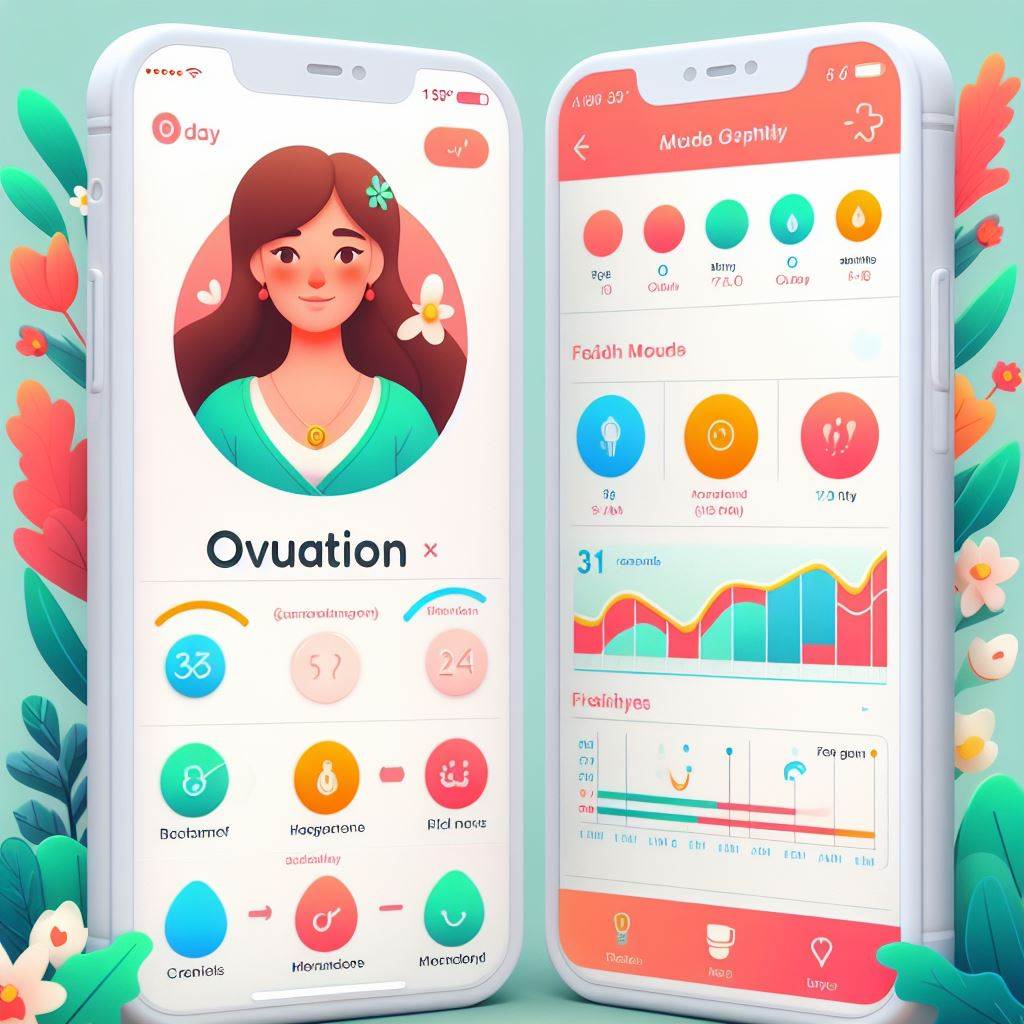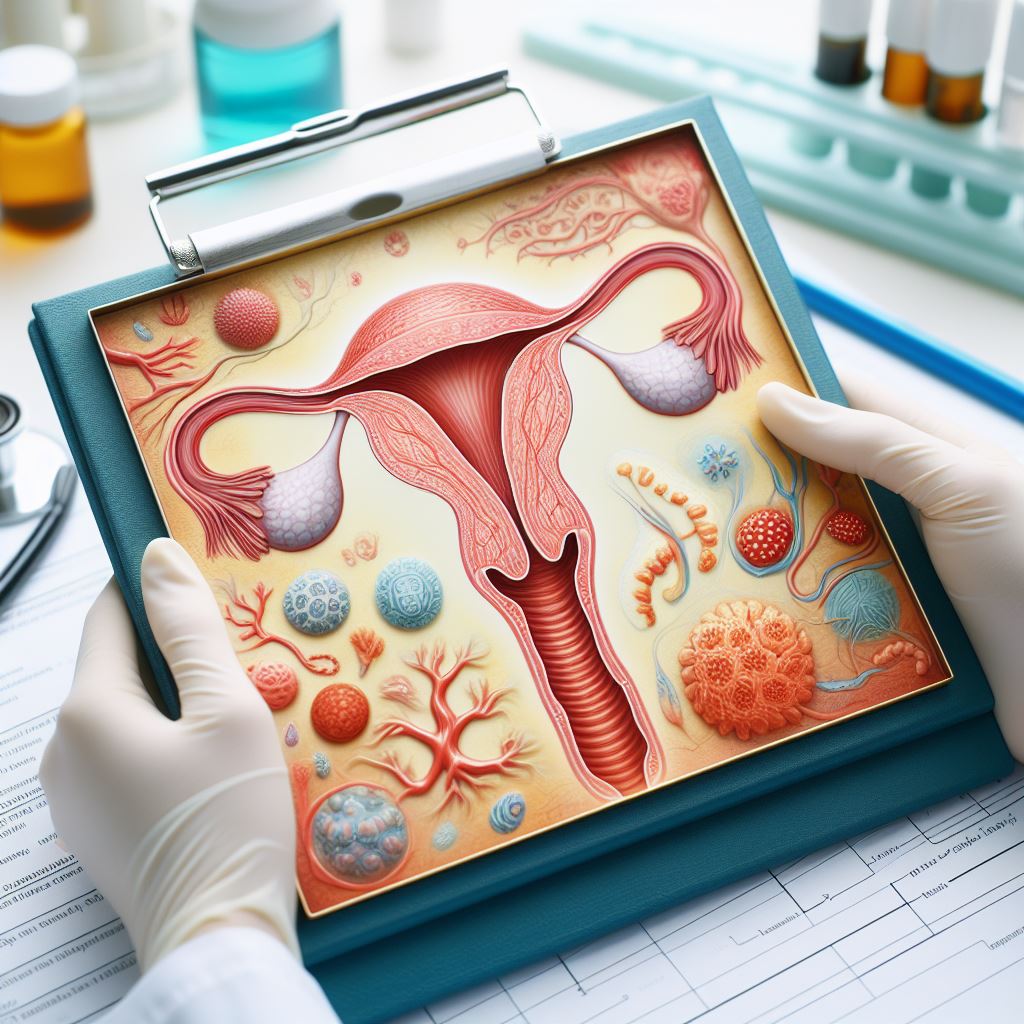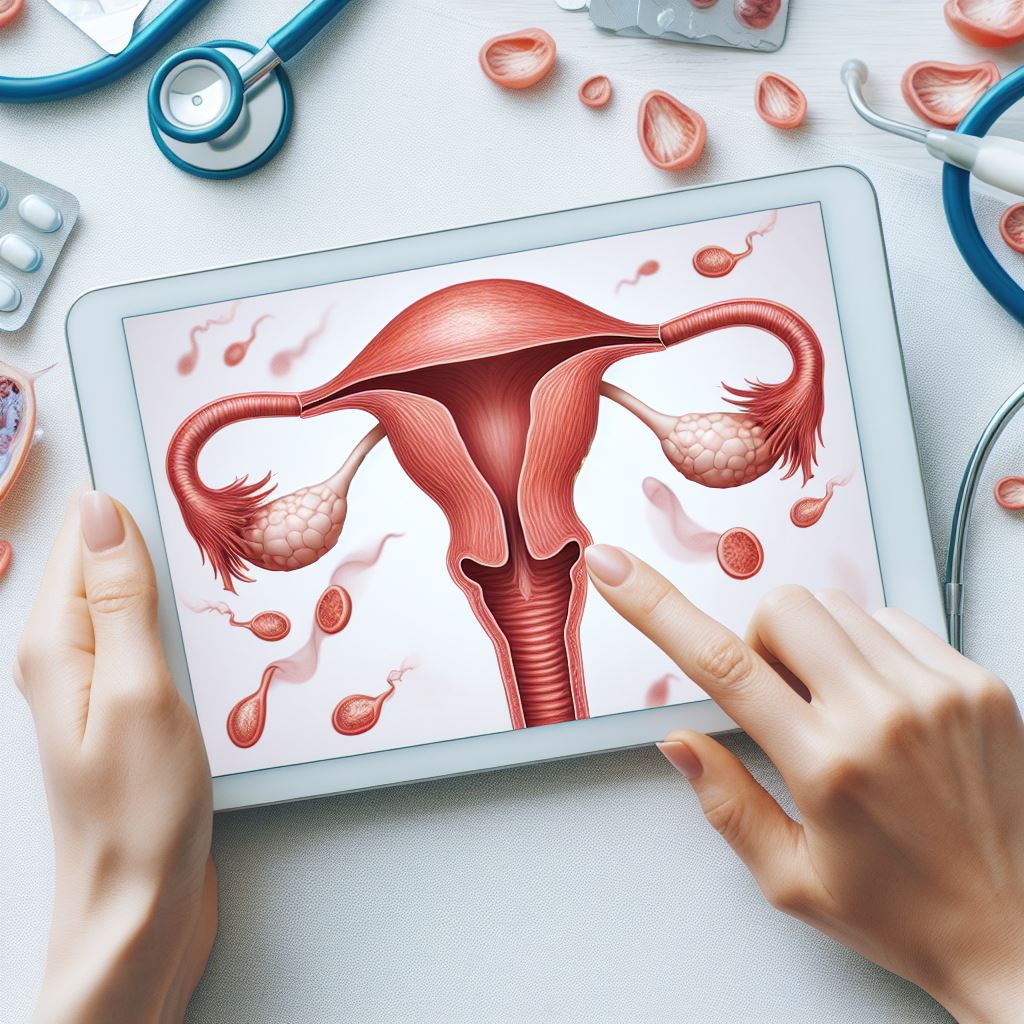Fertility apps are digital tools that allow users to record and monitor their menstrual cycles and bodily signs of ovulation. They are designed to provide more detailed and personalized information about the individual’s reproductive health and fertility window. Fertility apps are part of a larger category of technology known as FemTech, which targets female health issues and aims to empower women with data and knowledge.
But how effective and reliable are these apps for women who have fertility problems? What are the benefits and challenges of using them? And how do they shape women’s understanding and experience of their menstrual cycles? In this blog, we will explore these questions and more, based on the latest research and evidence on fertility apps and technology.
Introduction
Menstruation is a natural and normal process that affects millions of women around the world. However, it is also a complex and variable phenomenon that can be influenced by many factors, such as age, stress, diet, exercise, medication, and health conditions. For some women, menstruation can be a source of pain, discomfort, inconvenience, or stigma. For others, it can be a sign of fertility, health, or empowerment.
For women who want to conceive, understanding their menstrual cycles and ovulation patterns is crucial. Ovulation is the process of releasing an egg from the ovary, which can then be fertilized by a sperm. The fertile window is the period of time around ovulation when conception is most likely to occur. According to the American Pregnancy Association, the fertile window is usually six days long, ending on the day of ovulation. However, the exact timing and length of the fertile window can vary from woman to woman and cycle to cycle, depending on factors such as the length of the menstrual cycle, the regularity of ovulation, and the lifespan of the egg and sperm.
Traditionally, women have used various methods to track their menstrual cycles and ovulation, such as calendar-based calculations, basal body temperature measurements, cervical mucus observations, ovulation predictor kits, or fertility awareness methods. These methods require women to observe and record their bodily signs and symptoms, and to interpret them according to certain rules or algorithms. However, these methods can be time-consuming, inconvenient, inaccurate, or inconsistent, especially for women who have irregular or unpredictable cycles, or who have difficulty identifying or remembering their signs of ovulation.
In recent years, technology has offered new and innovative ways to track and manage menstruation and fertility. Fertility apps are one of the most popular and widely used forms of technology in this domain. Fertility apps are mobile applications that allow users to input and store data about their menstrual cycles, such as the start and end dates of their periods, the intensity and duration of their bleeding, their mood, energy, appetite, libido, pain, and other symptoms. Some apps also allow users to enter data about their basal body temperature, cervical mucus, ovulation test results, sexual activity, contraception use, pregnancy status, and other relevant factors. Based on the data entered, the apps then provide feedback and predictions to the users, such as when their next period is due, when their fertile window is, or when they should take a pregnancy test. Some apps also offer additional features, such as educational content, personalized advice, community forums, reminders, notifications, or gamification elements.
Fertility apps are marketed as convenient, user-friendly, and empowering tools that can help women to better understand their bodies, to plan or prevent pregnancy, to improve their reproductive health, or to cope with menstrual or fertility issues. According to a report by Frost & Sullivan, the global market for FemTech, including fertility apps, is expected to reach $50 billion by 2025, driven by the increasing demand and awareness of women’s health needs. The same report estimates that there are over 200 million users of fertility apps worldwide, and that this number is growing rapidly.
However, despite the popularity and potential of fertility apps, there are also many questions and challenges surrounding their use and impact. How accurate and reliable are these apps for predicting ovulation and fertility? How do they compare to other methods of tracking and managing menstruation and fertility? How do they affect women’s decision-making, behavior, and outcomes regarding their reproductive health and goals? How do they influence women’s perception and experience of their menstrual cycles? And how do they address the diversity and complexity of women’s needs and preferences?
In this blog, we will explore these questions and more, based on the latest research and evidence on fertility apps and technology. We will examine the benefits and limitations of using fertility apps for women who have fertility problems, and we will discuss the implications and recommendations for users, developers, and health professionals. We will also provide some tips and suggestions on how to choose and use fertility apps effectively and safely.
Benefits of using fertility apps for women who have fertility problems
Fertility problems are defined as the inability to conceive after one year of regular unprotected sex, or after six months if the woman is over 35 years old. According to the World Health Organization, about 10% of women of reproductive age worldwide suffer from infertility, and about 30% of infertility cases are due to female factors, such as ovulation disorders, tubal blockage, endometriosis, or polycystic ovary syndrome. Fertility problems can have a significant impact on women’s physical, mental, emotional, and social well-being, as well as their relationships, finances, and quality of life.
Fertility apps can offer several benefits for women who have fertility problems, such as:
- Providing more detailed and personalized information about the menstrual cycle and ovulation. Fertility apps can help women to collect and analyze data about their menstrual cycles and ovulation patterns, which can be useful for identifying and diagnosing potential causes of infertility, such as anovulation, irregular cycles, or luteal phase defect. Fertility apps can also help women to optimize their chances of conception by indicating their fertile window and the best days to have sex. Some studies have shown that fertility apps can improve women’s knowledge and awareness of their fertility and reproductive health, and that they can increase the accuracy and consistency of ovulation prediction compared to other methods, such as calendar-based calculations or cervical mucus observations [4, 5, 6].
- Enhancing convenience, accessibility, and affordability of fertility tracking and management. Fertility apps can offer a convenient, accessible, and affordable way for women to track and manage their fertility, especially for those who live in remote areas, have limited access to health care services, or face financial constraints. Fertility apps can reduce the need for frequent visits to clinics, laboratories, or pharmacies, and can lower the costs of fertility testing and treatment. Fertility apps can also enable women to track and manage their fertility at any time and place, and to share their data with their partners, health professionals, or support groups, if they wish.
- Empowering women with data and knowledge. Fertility apps can empower women with data and knowledge about their menstrual cycles and ovulation, which can help them to make informed and confident decisions about their reproductive health and goals. Fertility apps can also provide women with educational content, personalized advice, or community support, which can help them to cope with the emotional and psychological challenges of infertility, such as stress, anxiety, depression, isolation, or stigma. Some studies have found that fertility apps can improve women’s satisfaction, self-efficacy, and empowerment regarding their fertility and reproductive health [7, 8, 9].
Limitations of using fertility apps for women who have fertility problems
However, fertility apps also have several limitations and challenges for women who have fertility problems, such as:
- Lacking accuracy, reliability, and validity. Fertility apps rely on the data entered by the users, which can be incomplete, inaccurate, or inconsistent, depending on the user’s compliance, memory, or interpretation of their signs and symptoms. Fertility apps also use different algorithms and assumptions to calculate and predict ovulation and fertility, which can vary in their accuracy, reliability, and validity, depending on the scientific evidence, quality, and transparency behind them. Some studies have found that fertility apps can have high rates of error, discrepancy, or variability in their ovulation and fertility predictions, and that they can fail to detect or account for the variability and complexity of the menstrual cycle and ovulation, especially for women who have irregular or unpredictable cycles, or who have ovulation disorders or other health conditions that affect their fertility [10, 11, 12].
- Posing privacy and security risks.Fertility apps collect and store sensitive and personal data about the users, such as their menstrual cycles, ovulation, sexual activity, contraception use, pregnancy status, and other health and lifestyle factors. These data can be vulnerable to privacy and security breaches, such as unauthorized access, misuse, or disclosure, by third parties, such as app developers, advertisers, hackers, or governments. Fertility apps can also use the data for commercial or research purposes, without the user’s consent or awareness. Some studies have found that fertility apps can have poor or unclear privacy policies and practices, and that they can share or sell the user’s data to third parties, without adequate protection or regulation [13, 14, 15].
Reinforcing normative and stereotypical views of menstruation and fertility. Fertility apps can reinforce normative and stereotypical views of menstruation and fertility, such as the assumption that all women have regular and predictable cycles, that ovulation occurs on day 14 of a 28-day cycle, that the fertile window is six days long, or that the goal of fertility tracking is to conceive. These views can exclude, marginalize, or stigmatize women who have different or diverse experiences, needs, or preferences regarding their menstrual cycles and fertility, such as women who have irregular or abnormal cycles, who are infertile, who are not heterosexual, who are not in a relationship, who do not want to have children, or who have different cultural or religious beliefs or practices [16, 17, 18].
- Creating dependency, anxiety, or frustration. Fertility apps can create dependency, anxiety, or frustration for women who use them to track and manage their fertility, especially for those who have fertility problems. Fertility apps can make women feel that they have to constantly monitor and record their data, and that they have to follow the app’s feedback and predictions, which can be stressful, intrusive, or obsessive. Fertility apps can also create unrealistic or false expectations, or induce pressure or guilt, for women who use them to conceive, especially if they do not achieve their desired outcome within a certain time frame or according to the app’s suggestions. Some studies have found that fertility apps can increase women’s anxiety, frustration, or disappointment regarding their fertility and reproductive health [19, 20, 21].
Conclusion
Fertility apps are digital tools that can help women to track and monitor their menstrual cycles and ovulation, and to provide them with more detailed and personalized information about their reproductive health and fertility window. Fertility apps can offer several benefits for women who have fertility problems, such as providing more detailed and personalized information, enhancing convenience, accessibility, and affordability, and empowering women with data and knowledge. However, fertility apps also have several limitations and challenges for women who have fertility problems, such as lacking accuracy, reliability, and validity, posing privacy and security risks, reinforcing normative and stereotypical views, and creating dependency, anxiety, or frustration.
Therefore, it is important for women who use fertility apps to be aware of the advantages and disadvantages of these tools, and to use them with caution and critical thinking. Fertility apps should not be seen as a substitute for professional medical advice, diagnosis, or treatment, but rather as a complementary or supplementary source of information and support. Women who use fertility apps should also consult with their health care providers, partners, or support groups, and seek help if they have any concerns or questions about their fertility and reproductive health.
Moreover, it is also important for developers, researchers, and regulators of fertility apps to ensure that these tools are accurate, reliable, valid, transparent, ethical, and inclusive. Fertility apps should be based on sound scientific evidence, quality standards, and user feedback, and they should be tested and evaluated regularly and rigorously. Fertility apps should also respect and protect the user’s privacy and security, and they should provide clear and comprehensive information about their data collection, storage, use, and sharing practices. Fertility apps should also acknowledge and address the diversity and complexity of women’s needs and preferences, and they should avoid imposing or reinforcing normative or stereotypical views of menstruation and fertility.
Fertility apps are part of a larger trend of technology that aims to improve and empower women’s health and well-being. However, technology alone cannot solve the challenges and issues that women face regarding their menstrual cycles and fertility. Technology should be used in conjunction with other factors, such as education, awareness, advocacy, policy, and culture, to create a more supportive and enabling environment for women to achieve their reproductive health and goals.





